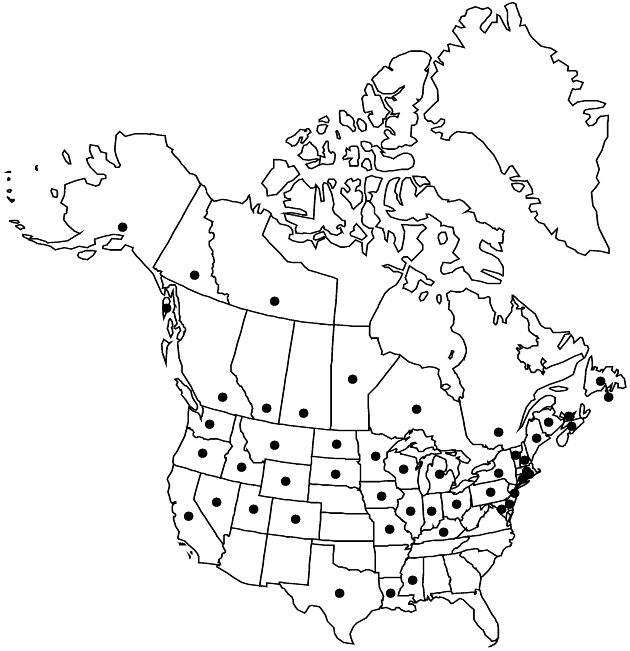Sonchus arvensis
Sp. Pl. 2: 793. 1753.
Perennials, 0–150 (–200) cm, usually rhizomatous or stoloniferous. Stem-bases hard, sometimes ± woody. Leaves: blades of mid cauline oblong to lanceolate, (3–) 6–40 × 2–15 cm, bases auriculate, auricles straight or curved, rounded, margins usually pinnately lobed, lobes ± deltate, not constricted at bases, terminals usually larger than laterals, dentate or entire. Peduncles sessile or stipitate-glandular. Involucres 10–17+ mm. Phyllaries sessile or stipitate-glandular. Corollas: ligules ± equaling tubes. Cypselae dark-brown, oblanceoloid to ellipsoid, 2.5–3.5 mm, ribs 4–5 (+) on each face, faces transversely rugulose to tuberculate across and between ribs; pappi 8–14 mm. 2n = 36, 54.
Distribution

Alta., B.C., Man., N.B., N.S., N.W.T., Nfld. and Labr. (Nfld.), Ont., P.E.I., Que., Sask., Yukon, Alaska, Calif., Colo., Conn., Del., Idaho, Ill., Ind., Iowa, Kans., Ky., Maine, Mass., Md., Mich., Minn., Miss., Mo., Mont., N.C., N.Dak., N.H., N.J., N.Y., Nebr., Nev., Ohio, Oreg., Pa., R.I., S.Dak., Tenn., Utah, Va., Vt., W.Va., Wash., Wis., Wyo., Europe, also in South America, Asia, Africa, Pacific Islands (New Zealand), Australia
Discussion
Subspecies 2 (2 in the flora).
Sonchus arvensis is introduced in temperate regions of all continents. Plants of the species prefer relatively cooler, moister climates and are more abundant in the northern part of North America.
Selected References
None.
Key
| 1 | Peduncles stipitate-glandular; phyllaries stipitate- glandular | Sonchus arvensis subsp. arvensis |
| 1 | Peduncles sessile-glandular; phyllaries usually sessile-glandular, rarely tomentose | Sonchus arvensis subsp. uliginosus |
"fine" is not a number.